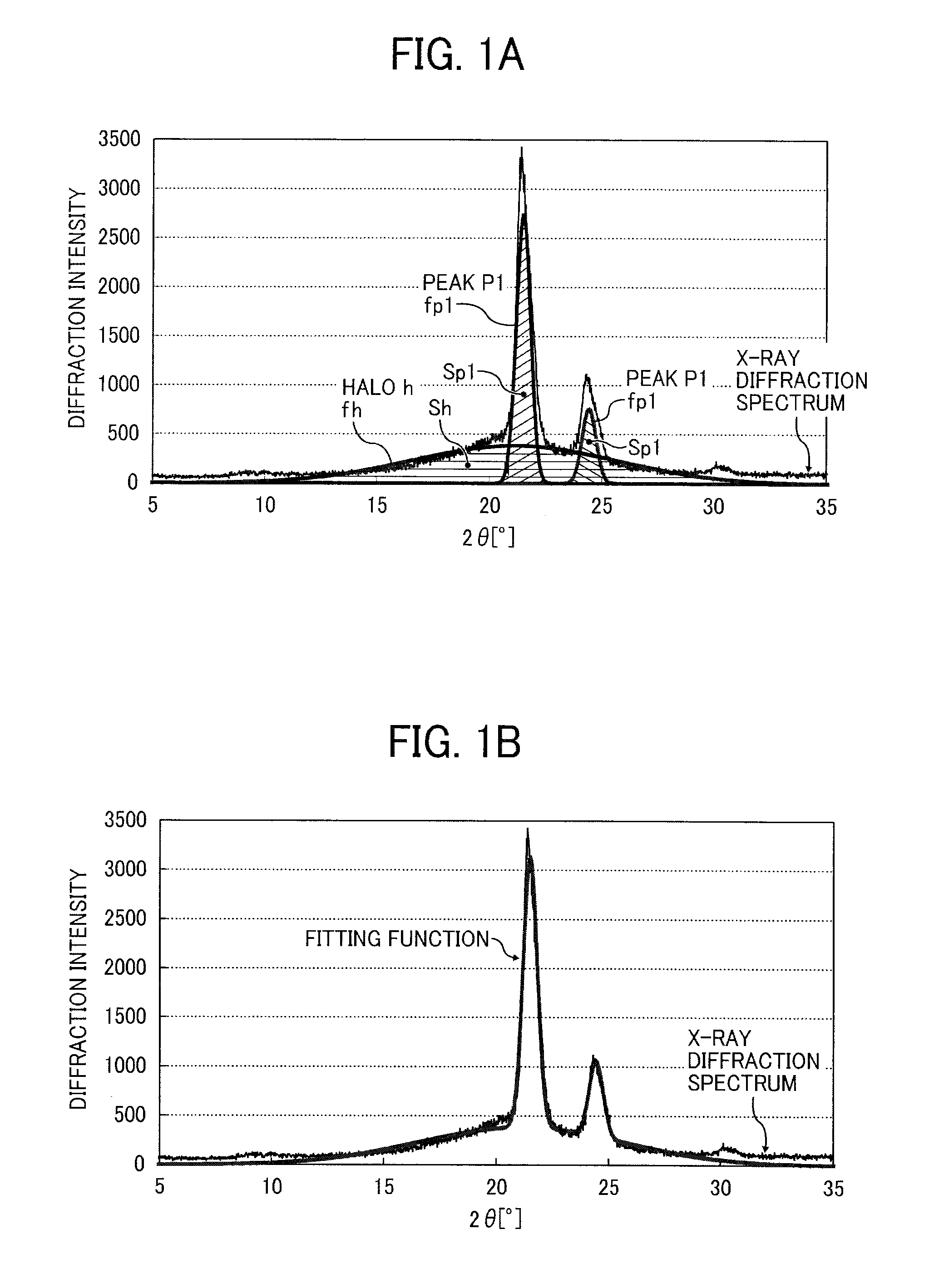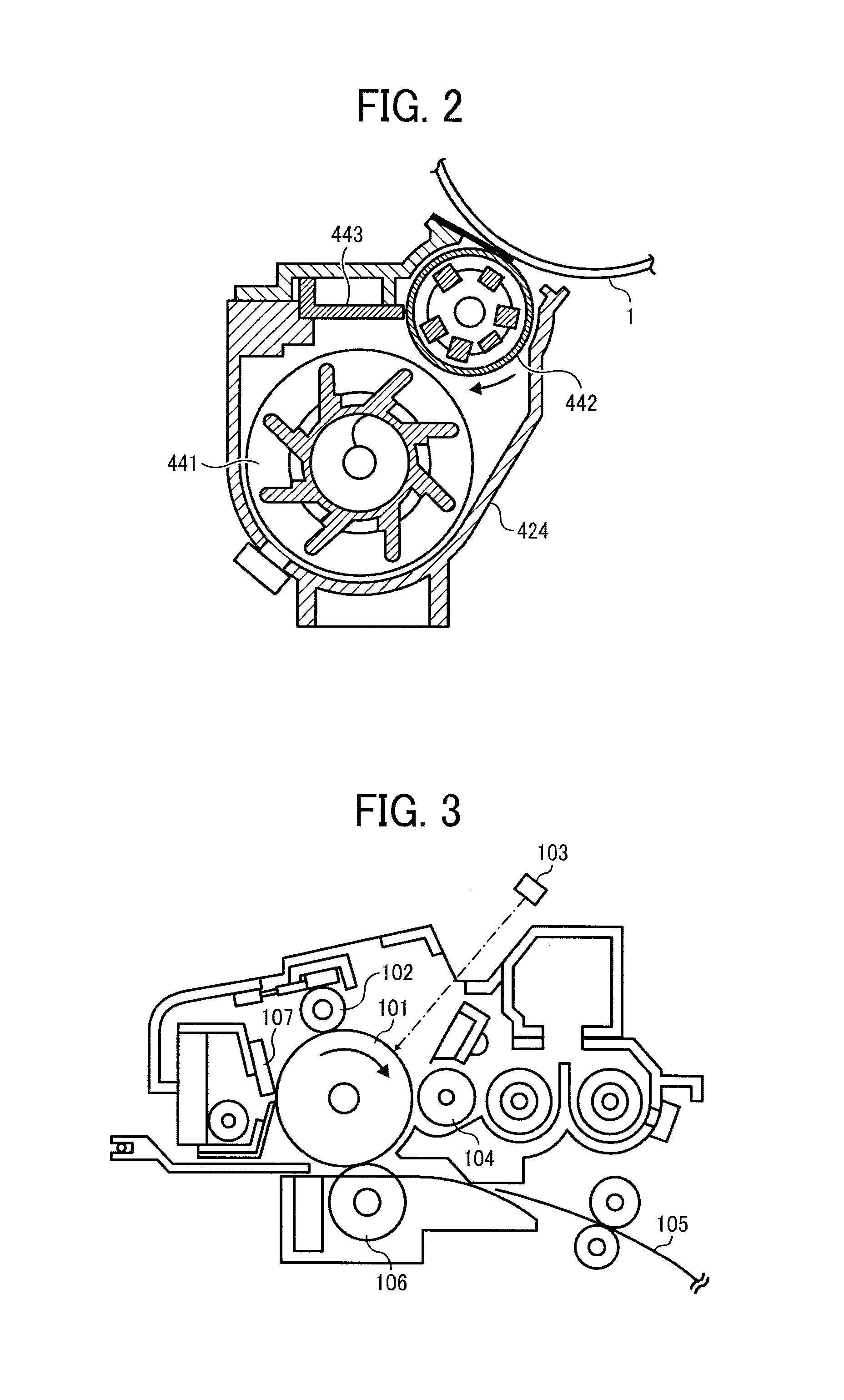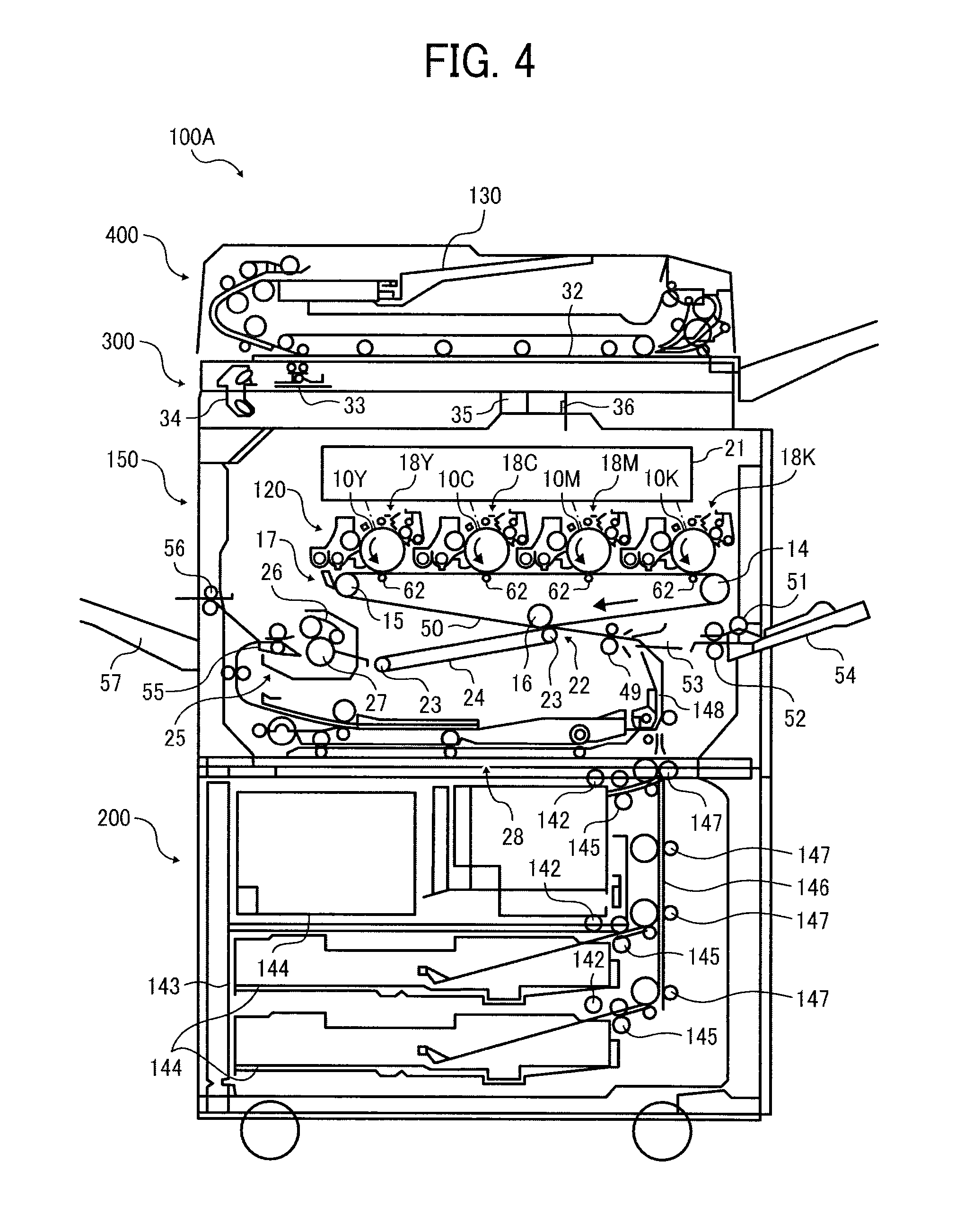Toner, development agent, image forming apparatus, and process cartridge
a technology of development agent and development agent, which is applied in the direction of electrographic process, electrographic process apparatus, instruments, etc., can solve the problems of toner particles, clumping, and inability to withstand high temperatures
- Summary
- Abstract
- Description
- Claims
- Application Information
AI Technical Summary
Benefits of technology
Problems solved by technology
Method used
Image
Examples
example 1-1
Preparation of Master Batch 1
[0503]1,200 parts of water, 500 parts of carbon black (Printex 35, manufactured by Degussa AG) having an DBP oil absorption amount of 42 ml / 100 mg and a pH of 9.5, and 500 parts of [Resin 1-A-1] were mixed followed by kneading at 150° C. for 30 minutes by a twin-shaft roll.
[0504]Next, after cooling and rolling, the resultant was pulverized by a pulverizer to obtain [Master batch 1].
Preparation of Master Batch 2
[0505]1,200 parts of water, 500 parts of carbon black (Printex 35, manufactured by Degussa AG) having an DBP oil absorption amount of 42 ml / 100 mg and a pH of 9.5, and 500 parts of [Resin 1-D-1] were mixed followed by kneading at 150° C. for 30 minutes by a twin-shaft roll.
[0506]Next, after cooling and rolling, the resultant was pulverized by a pulverizer to obtain [Master batch 2].
[0507]Manufacturing of Liquid Dispersion of Wax
[0508]100 parts of paraffin wax (HNP-9, melting point: 75° C., manufactured by NIPPON SEIRO CO., LTD.) and 400 parts of et...
example 1-2
[0584]Manufacturing of Toner 2
[0585][Toner 2] and [Development agent 2] were manufactured in the same manner as in the Preparation of Oil Phase of Example 1-1 except that the recipe was changed to 40 parts of [Wax liquid dispersion], 580 parts of [Resin 1-B-2], 100 parts of [Resin 1-A-1], 160 parts of [Resin 1-C-1], 120 parts of [Master batch 1], and 1,300 parts of ethyl acetate and the performance of [Toner 2] and [Development agent 2] was evaluated.
example 1-3
[0586]Manufacturing of Toner 3
[0587][Toner 3] and [Development agent 3] were manufactured in the same manner as in the Preparation of Oil Phase of Example 1-1 except that the recipe was changed to 40 parts of wax liquid dispersion, 620 parts of [Resin 1-B-3], 50 parts of [Resin 1-A-1], 170 parts of [Resin 1-C-1], 120 parts of [Master batch 1], and 1,300 parts of ethyl acetate and the performance of [Toner 3] and [Development agent 3] was evaluated.
PUM
| Property | Measurement | Unit |
|---|---|---|
| temperature | aaaaa | aaaaa |
| temperature | aaaaa | aaaaa |
| molecular weight distribution | aaaaa | aaaaa |
Abstract
Description
Claims
Application Information
 Login to View More
Login to View More - R&D
- Intellectual Property
- Life Sciences
- Materials
- Tech Scout
- Unparalleled Data Quality
- Higher Quality Content
- 60% Fewer Hallucinations
Browse by: Latest US Patents, China's latest patents, Technical Efficacy Thesaurus, Application Domain, Technology Topic, Popular Technical Reports.
© 2025 PatSnap. All rights reserved.Legal|Privacy policy|Modern Slavery Act Transparency Statement|Sitemap|About US| Contact US: help@patsnap.com



